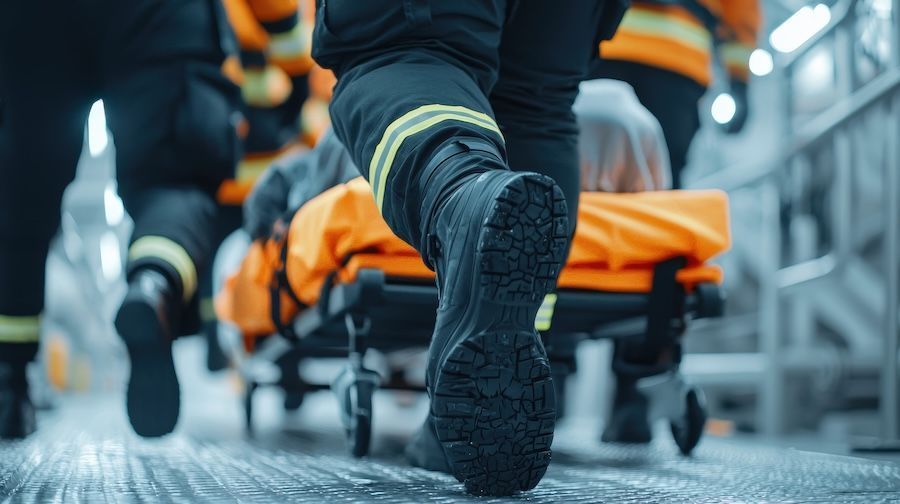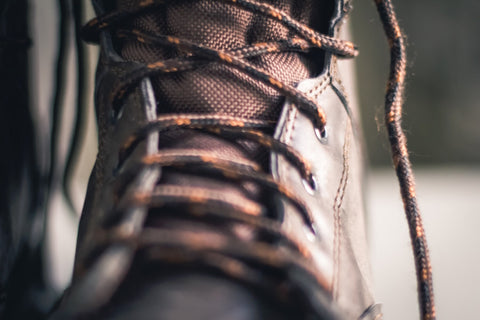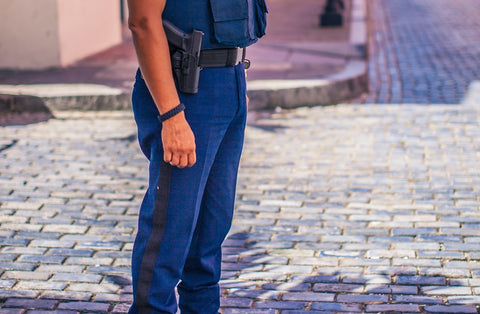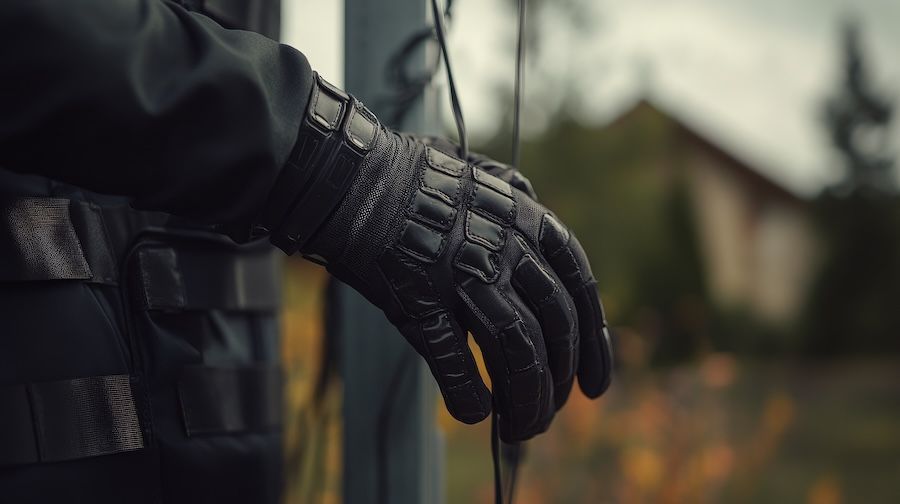Tactical Boots for First Responders: Comfort and Durability in High-Stress Environments

Tactical boots aren’t just about looking the part. They're about protecting your feet, keeping you comfortable, and giving you the grip and support you need to do your job safely.
A standard pair of work boots won’t cut it. First responders deal with long shifts, rough terrain, and constant movement. One moment, you're walking through a hospital corridor; the next, you're sprinting across wet pavement or climbing stairs in a high-rise. Your boots need to handle it all. That means all-day comfort, durability that lasts, and features designed for the challenges you face.
Choosing the right pair isn't just about preference, it’s about performance. The right boots help prevent injuries, reduce fatigue, and let you focus on your job instead of your aching feet.
If you're still wearing heavy, stiff, or uncomfortable boots, it's time to upgrade. Let’s look at why tactical boots are a must-have and what makes them different from your average work boots.
Why First Responders Need Tactical Boots
Your job doesn’t come with a warning sign. Every call, every shift, and every situation is different. One minute, you're responding to a medical emergency; the next, you're dealing with a security threat. You don’t have time to think about whether your boots will hold up.
They just need to work.
For police officers, tactical boots need to handle everything from long patrols to sudden foot pursuits. The wrong boots can slow you down, cause blisters, or leave you slipping when you need traction the most.
EMS professionals face a different challenge - standing for hours, kneeling on hard pavement, and moving through wet or slippery surfaces. A good pair of boots provides stability, grip, and support to keep up with the demands of the job.
Security professionals deal with long hours on their feet, often on hard surfaces like concrete floors. The right boots help prevent foot fatigue and keep you comfortable through even the longest shifts. And for all first responders, a proper fit and sturdy construction mean fewer injuries. Your feet go through a lot. Wearing the wrong boots can lead to chronic pain, poor posture, and even long-term damage. Tactical boots aren’t just about protection; they’re about keeping you at your best so you can focus on the job, not your discomfort.
Key Features of Tactical Boots
Not all boots are built the same. Tactical boots are designed for performance, comfort, and safety in the toughest conditions. The best ones have features that help you stay stable, move comfortably, and keep your feet protected, no matter where the job takes you. Here are some things to look for when shopping for your next pair of tactical boots:
Slip Resistance
You never know what kind of surface you’ll be walking on. Wet pavement, loose gravel, hospital floors, or slick stairwells - good boots help you stay on your feet. Look for outsoles with deep treads and non-slip materials designed to give you grip in any situation.
Ankle Support
Tactical boots offer reinforced ankle support to keep you steady, especially when you need to move fast or handle uneven ground. A snug fit around the ankle helps prevent rolling or strain, even during sudden movements.
Shock Absorption
Standing, running, and kneeling all day puts stress on your joints. High-quality tactical boots have cushioned midsoles that absorb impact, reducing strain on your feet, knees, and lower back. This means less fatigue and fewer aches after long shifts.
Water Resistance
Rain, spills, and wet environments are part of the job. The last thing you want is soaked feet. Tactical boots with waterproof or water-resistant materials help keep your feet dry without sacrificing breathability. Some models also have moisture-wicking linings to pull sweat away from your skin.
The right tactical boots don’t just protect your feet, they help you stay focused and ready for whatever the job throws your way.
Comfort and Ergonomics: The Role of Cushioning and Fit
A long shift can be brutal on your feet. Hours of standing, walking, running, and kneeling take their toll, especially if your boots aren’t built for comfort. While on the job, your boots should feel like an extension of your body, not something you have to fight against all day. Proper cushioning and a good fit make all the difference, keeping your feet supported and reducing fatigue.
Insoles are one of the biggest factors in comfort. High-quality tactical boots often come with memory foam or gel-cushioned insoles that mould to your feet, providing the right level of support where you need it most. This helps distribute pressure evenly, preventing soreness in the heels and arches. If your boots don’t come with premium insoles, swapping them out for custom orthotics can be a game-changer.
Breathability is just as important as cushioning. Working in hot, humid conditions with boots that trap heat and sweat is a recipe for discomfort. Look for tactical boots with moisture-wicking liners and ventilated panels. These features help keep your feet cool and dry, reducing the risk of blisters and fungal infections.
A proper fit is the final piece of the puzzle. Boots that are too tight can cause pressure points and restrict circulation, while loose boots can lead to chafing and instability.
A snug but comfortable fit around the heel and midfoot ensures stability, while a bit of wiggle room in the toe box prevents pinching. Many tactical boots come with lace-locking systems or adjustable side zippers, allowing you to fine-tune the fit for maximum comfort.
Durability: What Makes a Tactical Boot Long-Lasting?
Your footwear needs to hold up under constant stress. Durability is one of the biggest factors when choosing tactical boots, and you really want a pair that can take a beating. Of course, it all depends on the materials used in the making of your next pair of boots, they play a huge role in how long a pair of boots will last.
Full-grain leather is one of the toughest materials out there, offering excellent resistance to scuffs, abrasions, and water damage. Some boots combine leather with durable nylon mesh to reduce weight while maintaining strength.
Reinforced stitching is another key feature to look for. Weak seams can split over time, so double or triple-stitched construction helps extend the lifespan of your boots.
The outsole is what takes the most impact, so it needs to be tough. High-quality tactical boots use slip-resistant rubber outsoles with deep tread patterns for grip on multiple surfaces. A well-made outsole won’t wear down quickly, even with daily use. Some models also have reinforced toe caps or shanks for extra protection against wear and tear.
Waterproofing and weather resistance also contribute to durability. If you work in wet conditions, boots with sealed seams and water-resistant coatings will last longer. Moisture is one of the biggest enemies of boot longevity, leading to weakened materials and even mould growth if they aren’t properly dried.
Investing in a durable pair of tactical boots saves you money in the long run. A high-quality pair might cost more upfront, but if they last twice as long as a cheaper alternative, they’ll pay for themselves. With proper care, a well-made pair of boots can serve you for years without breaking down.
Choosing the Right Tactical Boot for Your Profession
Not all tactical boots are built the same. The right pair for a police officer might not be the best choice for an EMS worker or security professional. Different jobs come with different challenges, so it’s important to find boots that match your specific needs.
For police officers, mobility is a priority. Lightweight tactical boots with flexible soles allow for quick movement during foot pursuits and patrols. Look for models with reinforced ankle support to help prevent injuries when running or making sudden movements. Breathability is also key, especially during long shifts in hot weather.
EMS workers need boots that can handle unpredictable environments. Waterproofing and slip resistance are essential for working in wet or slippery conditions. Bloodborne pathogen-resistant materials are also a smart choice, providing an extra layer of protection when responding to medical emergencies. Comfort is another big factor, as EMTs spend a lot of time standing, kneeling, and moving patients. Cushioned insoles and shock-absorbing midsoles help reduce strain on the feet and lower back.
Security professionals often spend long hours on their feet, sometimes standing in one place for extended periods. Heavy-duty boots with reinforced support can help prevent foot fatigue. If working in a high-risk environment, boots with puncture-resistant soles or reinforced toe caps provide added protection.
Maintenance Tips to Extend the Life of Your Tactical Boots
A good pair of tactical boots is an investment. With the right care, you can keep them comfortable and durable for years. Proper maintenance not only extends their lifespan but also ensures they perform well in tough conditions.
Cleaning your boots regularly is the most important step.
Dirt, dust, and moisture can break down materials over time. After each shift, give your boots a quick wipe with a damp cloth to remove surface dirt. If they’re heavily soiled, use a soft brush and mild soap to scrub away grime. Try to avoid harsh detergents that can damage leather or waterproof coatings, and make sure to rinse off any soap residue. Lastly, always make sure your boots air-dry completely before wearing them again.
Waterproofing helps keep your feet dry and your boots in top shape. Even if your boots come with water-resistant materials, an extra layer of protection can go a long way. A waterproofing spray or wax creates a barrier against moisture, preventing materials from breaking down. Apply it every few weeks, especially if you work in wet or muddy environments.
Proper storage is just as important as cleaning.
Tossing your boots in the trunk of your car or stuffing them in a locker can cause them to lose their shape and develop odours. Instead, store them in a cool, dry place with good airflow. If they get wet, stuff them with newspaper to absorb moisture and help them dry faster. Avoid placing them near direct heat sources like radiators or space heaters, as excessive heat can cause the materials to crack.
Rotating between two pairs of boots can also help extend their lifespan. Giving your boots time to breathe between shifts reduces wear and tear. If your job is especially demanding on footwear, having a backup pair ensures you always have a reliable option ready to go.
Taking a few extra minutes to clean, protect, and store your boots properly can save you from having to replace them too soon. A little care goes a long way in keeping them comfortable and job-ready.
Conclusion: Investing in the Right Tactical Boots
The right pair of tactical boots isn’t just about comfort, it’s about performance, protection, and durability. Long shifts, unpredictable conditions, and demanding tasks make high-quality footwear essential for first responders. Your boots should support you every step of the way, keeping you focused on the job instead of worrying about sore feet or worn-out soles.
Choosing a well-made pair means looking for features that fit your specific needs.
Breathability, cushioning, slip resistance, and waterproofing all play a role in how comfortable and reliable your boots will be. Tough materials and solid construction ensure they hold up through daily wear and extreme conditions. Investing in quality upfront saves you time and money in the long run.
Caring for your boots is just as important as choosing the right pair. Regular cleaning, proper storage, and waterproofing treatments help extend their life and keep them performing at their best. A little maintenance can mean the difference between boots that last a few months and boots that support you for years.
When your gear works with you, not against you, the job becomes a little easier. High-quality tactical boots give you the confidence to move, react, and perform at your best, no matter what the day throws at you.











